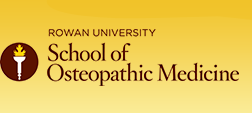Keywords
Meralgia Paresthetica, Femoral Neuropathy, cholecystectomy
Date of Presentation
5-6-2021 12:00 AM
Poster Abstract
An 18 year old G1P1 female, 3 months postpartum presented to the emergency department with abdominal pain that was diagnosed as cholelithiasis and choledocholithiasis. Following a cholecystectomy surgery, the patient developed weakness and gait abnormality that was diagnosed as neuralgia.
Meralgia paresthetica is such an understudied diagnosis that its incidence is unknown. Patients who are 30-85 years old, obese, diabetic, and/or pregnant are at an increased risk for the condition. This case calls attention to the underdiagnosis of meralgia paresthetica in pediatric patients with comorbidities. As aforementioned risk factors increase in the pediatric population due to societal and environmental factors, it is imperative to consider these factors when managing pediatric patients at risk for postoperative meralgia paresthetica.
Disciplines
Medicine and Health Sciences | Nervous System Diseases | Pathological Conditions, Signs and Symptoms | Surgical Procedures, Operative
Included in
Nervous System Diseases Commons, Pathological Conditions, Signs and Symptoms Commons, Surgical Procedures, Operative Commons
Meralgia Paresthetica as a Complication of Laparoscopic Cholecystectomy in a Post Partum Teenager
An 18 year old G1P1 female, 3 months postpartum presented to the emergency department with abdominal pain that was diagnosed as cholelithiasis and choledocholithiasis. Following a cholecystectomy surgery, the patient developed weakness and gait abnormality that was diagnosed as neuralgia.
Meralgia paresthetica is such an understudied diagnosis that its incidence is unknown. Patients who are 30-85 years old, obese, diabetic, and/or pregnant are at an increased risk for the condition. This case calls attention to the underdiagnosis of meralgia paresthetica in pediatric patients with comorbidities. As aforementioned risk factors increase in the pediatric population due to societal and environmental factors, it is imperative to consider these factors when managing pediatric patients at risk for postoperative meralgia paresthetica.

